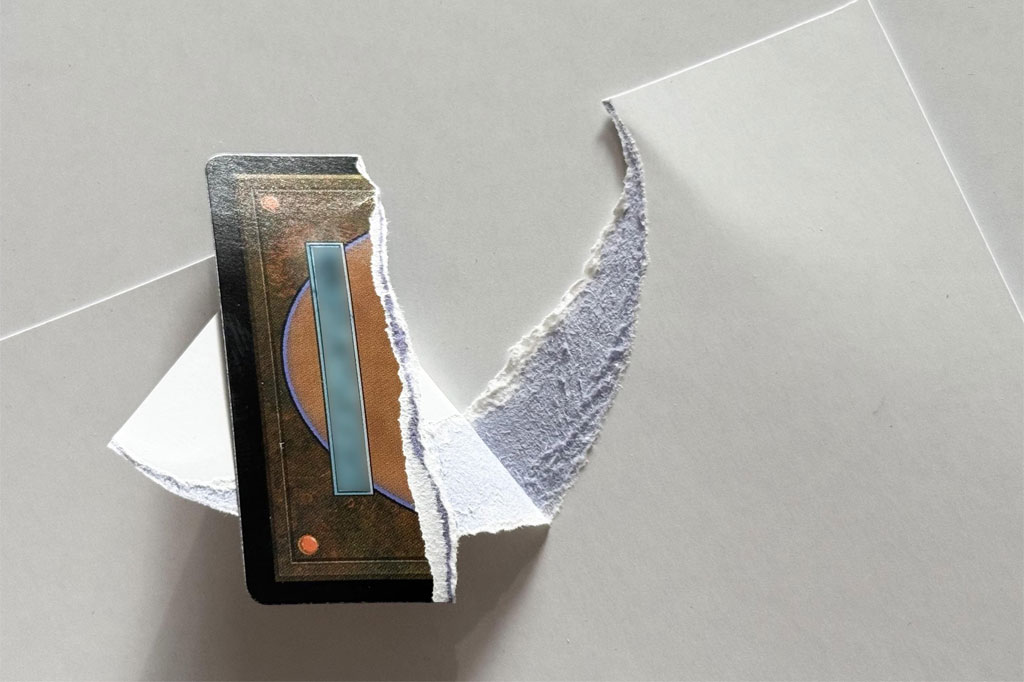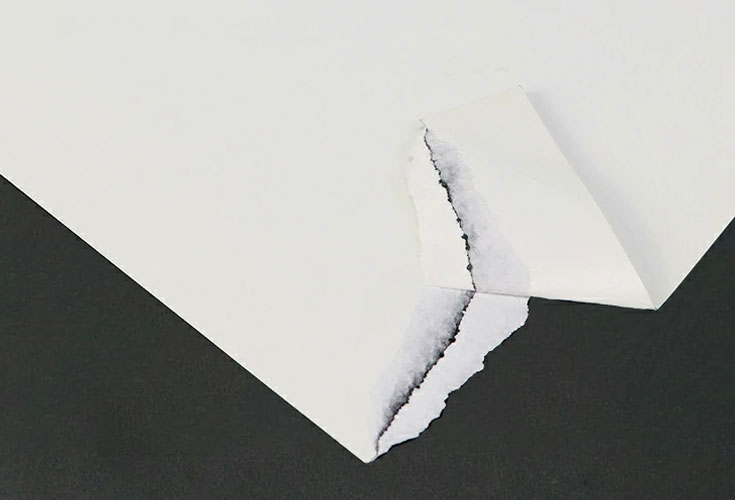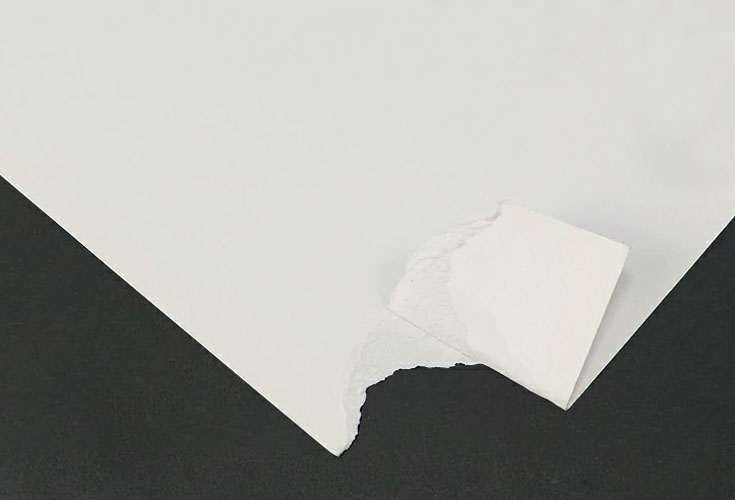The “core” of a game card refers to the inner layer that affects the card’s thickness, stiffness, opacity, and overall durability. Different types of cardstock cores are used depending on the intended feel, quality, and functionality of the card.
In this article, we’ll explore four common types of game card cores: blue core, black core, white core, and grey core.
Table of Contents
1. Blue Core

Blue core cards are known for their exceptional opacity. The blue inner layer prevents light from passing through, making the cards ideal for double-sided printing.
This ensures that players cannot see the image or text from the back through the front, which is crucial for fair gameplay.
Key Features:
- High opacity to prevent “see-through” effects.
- Smooth printing surface.
- Provides moderate stiffness and durability.
Common Applications:
- Trading card games (TCGs) such as Magic: The Gathering or Pokémon.
- Card games require vibrant double-sided designs.
Advantages:
- Reduces cheating due to transparency.
- Affordable compared to premium options.
2. Black Core

Black core cards are designed for ultimate opacity and a luxurious feel. The black inner layer completely blocks light, preventing any visibility of the back design.
They are often considered premium and are used for high-end card games or collector’s editions.
Key Features:
- Maximum opacity for no light bleed-through.
- Adds a subtle weight, giving the cards a premium feel.
- Excellent durability and resistance to bending.
Common Applications:
- Premium or collector edition card games.
- Casino-quality cards and professional-grade card decks.
Advantages:
- Superior opacity ensures fair play.
- Provides a satisfying tactile experience.
- Long-lasting and resistant to wear.
3. White Core

White core cards are the most commonly used in standard playing cards and mid-range game decks. The white inner layer is neutral, providing a consistent feel and smooth printing surface.
While not as opaque as blue or black core, white core cards offer a reliable balance between cost, durability, and aesthetics.
Key Features:
- Moderate opacity; may show slight transparency under bright light.
- Smooth surface suitable for high-quality printing.
- Lightweight and flexible.
Common Applications:
- Standard playing cards.
- Board game decks that do not require high opacity.
- Promotional or casual card games.
Advantages:
- Cost-effective solution for mass production.
- Versatile and compatible with various printing techniques.
- Lightweight and easy to shuffle.
4. Grey Core

Grey core cards are an intermediate option between white and black core. The grey inner layer offers better opacity than the white core while being more affordable than the black core.
Grey core cards provide a neutral, professional look while maintaining moderate stiffness.
Key Features:
- Medium opacity; better than white core, slightly less than black core.
- Balanced stiffness and durability.
- Suitable for both casual and professional game decks.
Common Applications:
- Strategy card games requiring moderate opacity.
- Board games with intricate designs.
- Premium yet cost-conscious card production.
Advantages:
- Good opacity and durability without high cost.
- Professional appearance.
- Well-suited for games with double-sided printing.
A Summary Comparison Chart
| Core Type | Opacity | Stiffness & Durability | Cost | Ideal Applications | Key Advantage |
|---|---|---|---|---|---|
| Blue Core | High | Moderate | Moderate | Trading card games, double-sided printed cards | Prevents see-through, fair play |
| Black Core | Maximum | High | High | Premium/collector decks, casino-quality cards | Premium feel, ultimate opacity |
| White Core | Moderate | Moderate | Low | Standard playing cards, casual board games | Cost-effective, versatile |
| Grey Core | Medium | Moderate | Moderate | Strategy card games, professional yet affordable decks | Balanced opacity and quality |
This chart allows a quick glance to see which core fits your game design, budget, and quality requirements.




